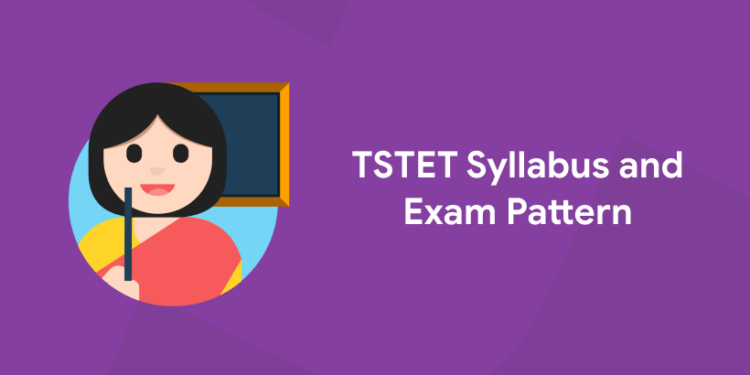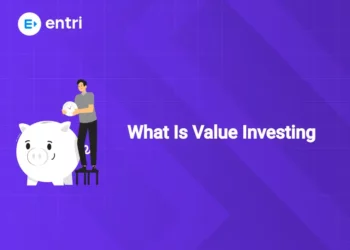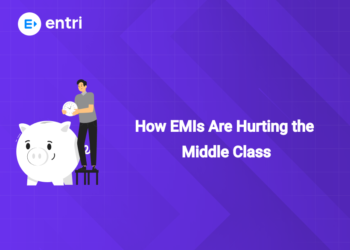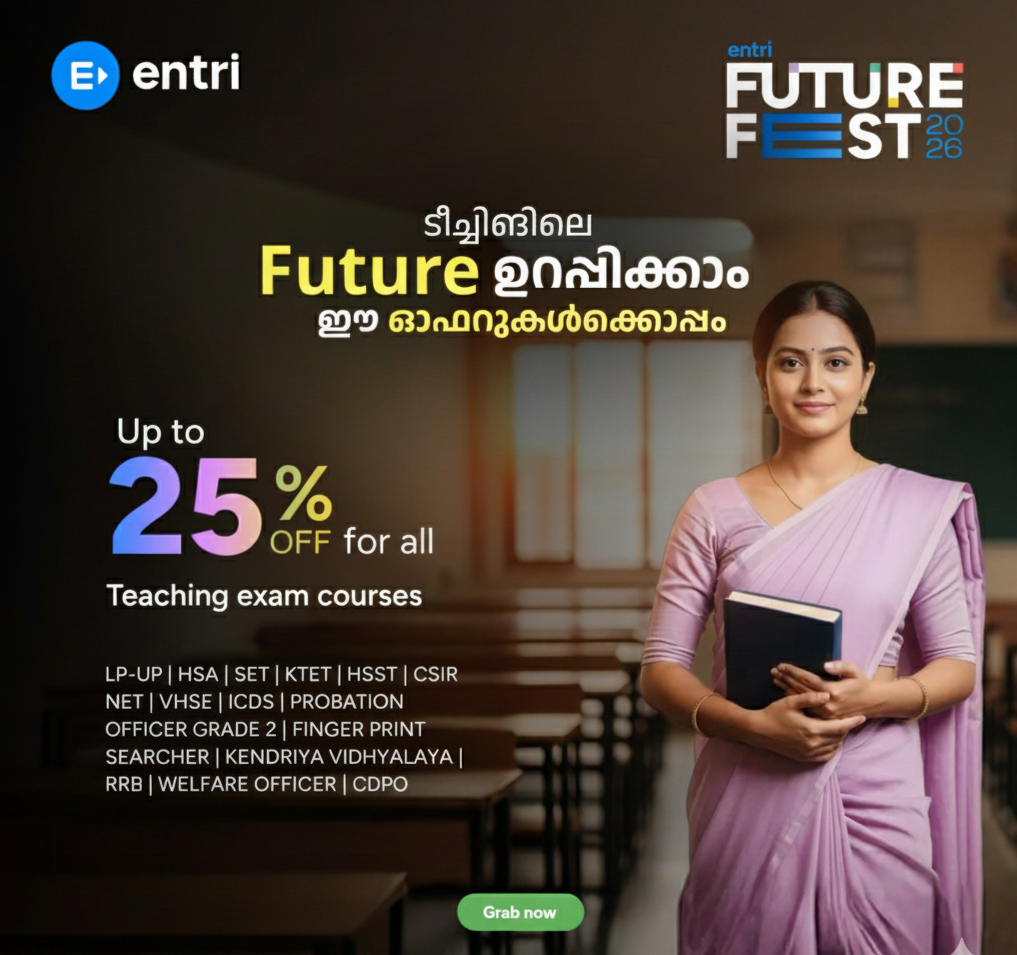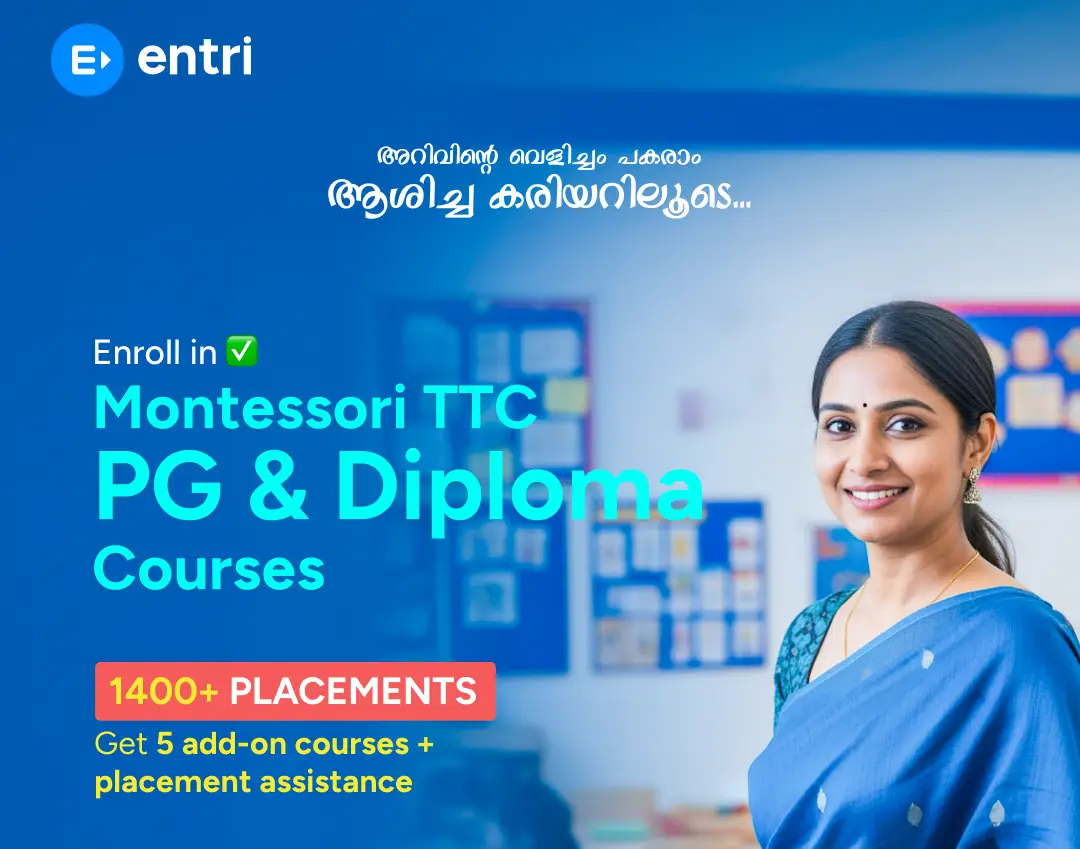Table of Contents
Telangana State Teacher’s Eligibility Test (TSTET) has been released and the candidates who were aspiring to become a teacher should start their exam preparation with the provided syllabus. There will be a written examination as part of TSTET. Applicants can check out the syllabus and exam pattern from this article TSTET Syllabus and Exam Pattern 2022 – Check Paper 1, 2 Syllabus.
Get a Free Mock test For TS TET Exams Here
TS TET 2022 Important Dates
| TS TET 2022 Events | Important Dates |
| Notification Release Date | 24th March 2022 |
| Online Payment of Exam Fee | 26th March 2022 to 11th April 2022 |
| Application Start Date | 26th March 2022 |
| Application End Date | 12th April 2022 |
| TS TET 2022 Admit Card Download | 6th June 2022 onwards |
| TS TET 2022 Written Exam | 12th June 2022 |
| TS TET 2022 Result | 27th June 2022 |
TSTET Exam Pattern 2022
Candidates who are preparing for the Teacher’s Eligibility Test should go through the below-mentioned syllabus and exam pattern for easy learning and time management. Learning with a plan based on the syllabus and exam pattern will help you to score high because you can focus more on your weaker sections and can work out some previous year questions also. Telangana State Teacher’s Eligibility Test 2022 exam consists of two papers in order to recruit the teachers at various levels of schooling: The aspirants can appear for either Paper-I or Paper-II or both the papers depending on the eligibility criteria. The question paper is fabricated in a bilingual format consisting of questions in the selected Language I and in English(Language II).
Grab The Latest TS TET 2022 Video Classes, Register Now!
TS TET Paper I
| S. No. | Subject (All Compulsory) | No. of MCQs | Marks |
| i | Child Development and Pedagogy | 30 | 30 |
| ii | Language I | 30 | 30 |
| iii | Language II English | 30 | 30 |
| iv | Mathematics | 30 | 30 |
| v | Environmental Studies | 30 | 30 |
| Total | 150 | 150 |
TS TET Paper II
| S. No. | Subject (All Compulsory) | No. of MCQs | Marks |
| i | Child Development and Pedagogy | 30 | 30 |
| ii | Language I | 30 | 30 |
| iii | Language II English | 30 | 30 |
| iv | a) For Mathematics and Science Teachers: Mathematics and Science
b) For Social Studies Teacher: Social Studies c) For any other teacher: Either iv (a) or iv (b) |
60 | 60 |
| Total | 150 | 150 |
TS TET 2022 Qualifying Marks
| Category | Pass Marks |
| General | 60 per cent and above |
| OBC | 50 per cent and above |
| SC/ST/Differently Abled (Physically Handicap) | 40 per cent and above |
Grab The Latest TS TET 2022 Study Notes, Register Now!
TS TET Syllabus 2022
TS TET Paper I
| S. No. | Subject (All Compulsory) | Syllabus & Topics |
| i | Child Development and Pedagogy | 1. DEVELOPMENT OF CHILD
2. UNDERSTANDING LEARNING
3. PEDAGOGICAL CONCERNS
|
| ii | Language I | For Language – I of TS-TET Paper-I, following languages are offered under first Language in schools under State Syllabus viz., Telugu, Urdu, Hindi, Bengali, Kannada, Marathi, Tamil and Gujarati. A Candidate has to choose one of these 8 languages under Language-I of TSTET. For Syllabus of Language I, |
| iii | Language II English | CONTENT (Marks: 24)
1. Parts of Speech 2. Tenses 3.Types of Sentences 4.Prepositions & Articles 5. Degrees of Comparison 6. Direct and Indirect Speech 7. Questions and question tags 8. Active & Passive voice 9. Phrasal verbs 10. Reading Comprehension 11.Composition 12.Vocabulary, 13. Meaning of idiomatic expressions, 14. Correction of Sentences, 15. Sequencing of the Sentences in the given paragraph 16. Error identification within a sentence. PEDAGOGY (Marks: 06) 1. Aspects of English:- (a) English language – History, nature, importance, principles of English as second language (b) Problems of teaching / learning English 2. Objectives of teaching English. 3. Phonetics 4. Development of Language skills:- (a) Listening, Speaking, Reading & Writing (LSRW). (b) Communicative skills. 5. Approaches, Methods, Techniques of teaching English. (a) Introduction, Definition and Types of approaches methods and techniques of teaching English (b)Remedial teaching. 6. Teaching of structures and vocabulary items. 7. Teaching learning materials in English 8. Lesson Planning 9. Curriculum & Textbooks 10. Evaluation in English language Teaching – CCE |
| iv | Mathematics | CONTENT (Marks: 24)
1. Number System: Natural Numbers, Whole Numbers, Integers, Rational Numbers & their fundamental operations (addition, subtraction, multiplication and division). Primes Composite Numbers, Co-Primes, Twin Primes, Relationship between LCM & GCD, Indian currency, Representation of Natural, Whole, integers and rational numbers on a number line. Terminating and Non-terminating decimals, Non-terminating but recurring decimals, square, square root, cube, cube roots of numbers, Pythagorean triplets. Applications on number system 2. Fractions: Concept of Fractions, Proper Fractions, Improper Fractions, Mixed Fractions, Decimal Fractions, Comparison, Fundamental operations on fractions (addition, subtraction, multiplication and division), Representation of a fraction in pictorial form and on a number line, reciprocal of fraction, uses of fractions in daily life 3. Arithmetic: Unitary method, percentages, profit and loss, ratio and proportion, direct proportion, discount, simple interest, compound interest, time and work, time and distance, tax (Vat). 4. Geometry: Basic idea of geometry (2D & 3D shapes), types of angles, construction and measurement of angles, types of angles, lines, triangles, types of triangles, quadrilaterals, types of quadrilaterals, congruence, property of congruencies of triangles (SAS, SSS, ASA, RHS), construction of triangles and quadrilaterals, patterns with geometrical shapes, representing 3D Shapes into 2D Shapes, Euler’s relation, Properties of triangles, parallelogram, trapezium, Rhombus, Rectangle, Square and Kite, Concept of Circles, Symmetry. 5. Measurements: Length, Weight, Capacity, Time and their Standard Units, Surface Area and volume of a cube and a cuboids, perimeter and area of triangle, quadrilateral, parallelogram, rectangle, Rhombus, Square and Trapezium. Circumference of a circle, Area of Circle, Circular paths, other polygons and sector in a circle. 6. Data Applications: Introduction to Data, Data Presentation, Preparation of Frequency distribution table, Bar Graph, Pictograph, Histogram, Mean, Median and Mode of ungrouped data, determination of Mean by deviation method, Cumulative Frequency Distribution Table, Frequency Polygon, Frequency Curve and Cumulative Frequency Curves. 7. Algebra: Introduction to Algebra, Simple equations, solving linear equation in one variable, exponents and powers, Algebric expressions, Addition, Subtraction, Multiplication, Division and Factorisation of algebric expressions, algebric identities. PEDAGOGY (Marks: 06) 1. Definitions and Nature of Mathematics 2. Aims, values, instructional objectives of teaching Mathematics and Academic Standards 3. Methods of Teaching Mathematics 4. Instructional material in Mathematics – TLM in Mathematics 5. Instructional Planning 6. Continuous Comprehensive Evaluation (CCE) – Formative Assessment, Summative Assessment – Processes and procedures 7. Designing, Administration, Analysis of scholastic Achievement test (SAT) 8. Diagnostic and Remedial Teaching 9. The Mathematics Teacher 10. Resource Utilization 11. Curriculum and Textbook |
| v | Environmental Studies | CONTENT (Marks: 24)
1. My Family – My Family – Family tree, migration, changing structures of family -nuclear and joint families, festivals. 2. Work & Play – Occupations, Child labor, Games – Local, National and International, Marshal Arts, Effects of games on respiration and breathing, fairs, Circus. 3. Plants and Animals-Plants & animals in our surroundings, Plant & Animal products, parts of a plant, photosynthesis, parts of a flower, pollination, fertilization, fruits, seeds. Wild & cultivated plants, wild & domestic animals their food, arrangement of teeth in animals. 4. Our Food – Different types of food, storage of grains and vegetables, storage of food, Food – animal husbandry, Nutrients of food, deficiency diseases. 5. Shelter – Need, different types of houses, electrical appliances – their use, social life in ants and honey bees, Animals shelter – variation. 6. Air – Importance of air, composition of air, atmospheric pressure, diseases spread through air and their prevention, air pollution – causes, its impact, and measures to prevent, Green House effect. 7. Energy – Renewable, Non-renewable, Future Energy. 8. Water – Importance, water resources, tanks, aquatic flora and fauna, measurement of liquids, Water pollution – causes, impact, measures to prevent, purification of water, drought, floods. 9. Our Body – Health – Cleanliness – External, Internal parts of our body, Bones, Muscles, Sense organs, Digestion, Respiration, Nervous system, Excretory system, Circulatory system, First Aid. 10. Mapping – Direction, Mandal, District, State, India 11. History and culture of India – Evolution of Man, Pre-historic period, Indian culture and Heritage, Civilization, Medieval period culture, Ancient monuments, Religious movements: Jainism, Buddhism, Bhakti movement, Great personalities, Indian freedom movement, Modern India. 12. Our country (India) – Location, Area, Physical features, Climate, Natural resources, Continents and Oceans, Historical places in India, Population. 13. Our state (Telangana) – Culture, State Government, Gram Panchayat, Mandal Parishad, Municipality, Municipal Corporation, Local Emergency services, our state symbols, Livelihood, Civilization – Impact of rivers. 14. Indian constitution – Preamble, Major concepts, Fundamental rights, Fundamental duties, Child Rights 15. Security – Earth Quakes, Floods, Fire, First Aid, 108, 104 Vehicles PEDAGOGY (Marks: 06) 1. Concept and scope of Environmental Studies (Science & Social Studies) 2. Aims & Objectives of teaching Environmental Studies (Science & Social Studies) Academic Standards of Teaching EVS 3. Relation to Science and Social Studies 4. Curriculum and its transaction 5. Learning Environment 6. CCE |
TS TET Paper II
| S. No. | Subject (All Compulsory) | Syllabus & Topics |
| i | Child Development and Pedagogy | 1. DEVELOPMENT OF CHILD
2. UNDERSTANDING LEARNING
3. PEDAGOGICAL CONCERNS
|
| ii | Language I | For Language – I of TS-TET Paper-II, following languages are offered under first Language in secondary schools under State Syllabus viz., Telugu, Urdu, Hindi, Kannada, Marathi, Tamil and Sanskrit. A Candidate (other than language pandit candidate) has to choose one of these 7 languages. For Language I Syllabus, |
| iii | Language II English | CONTENT (Marks: 24)
(1) Parts of Speech (2) Tenses (3) Active voice & Passive voice (4) Prepositions and Articles (5) Degrees of comparison (6) Clauses (7) Verbs – Main Verbs – Auxiliary Verbs (8) Adverbs Types of Adverbs (9) Conjunction – coordinating conjunction – subordinating conjunction. (10) Direct and Indirect Speech (11) Questions and question tags (12) Types of sentences – simple, compound and complex – synthesis of sentences (13) Phrases – uses of phrases. (14) Composition – letter writing – precise writing (15) Comprehension (16) Vocabulary – Antonyms, Synonyms and Spellings (17) Meaning of idiomatic expressions, (18) Correction of Sentences, (19) Sequencing of the Sentences in the given paragraph (20) Error identification within a sentence PEDAGOGY (Marks: 06) 1. Aspects of English:- (a) English language – History, nature, importance, principles of English as second language. (b) Problems of teaching / learning English. 2. Objectives of teaching English. 3. Phonetics / Transcription. 4. Development of Language skills:- (a) Listening, Speaking, Reading & Writing (LSRW). (b) Communicative skills – Imparting values through Communication. 5. Approaches, Methods, Techniques of teaching English:- (a) Introduction, definition & types of Approaches, Methods &Techniques of teaching English (b) Remedial teaching. 6. Teaching of structures and vocabulary. 7. Teaching learning materials in English Language Teaching. 8. Lesson Planning. 9. Curriculum & Textbooks – Importance and its need. 10. Evaluation in English Language Teaching – CCE |
| iv | a) For Mathematics and Science Teachers: Mathematics and Science
b) For Social Studies Teacher: Social Studies c) For any other teacher: Either iv (a) or iv (b) |
IVa. MATHEMATICS & SCIENCE
CONTENT (Marks: 24) 1. Number System – Prime and Composite Numbers, Tests of divisibility, whole numbers, integers, fractions, decimal fractions, L.C.M. and G.C.D. rational numbers and irrational numbers. Properties of numbers, Real numbers; laws of exponents, squares, square roots, cubes, cube roots, finding missing number represented as alphabets in sums involving array of four operations, number patterns, number puzzles, Euclid division lemma, concept of logarithms. 2. Arithmetic – Ratio and proportion, simple interest, compound interest, Time and distance, Discount, tax, time and work, profit and loss 3. Sets – Concept of set, set language, empty set, finite and infinite sets, subset and equality of sets, cardinal number of set, set operations, representation of sets, Venn diagrams and their properties, 4. Algebra -Introduction to Algebra, expressions, exponents and powers, Factorization special products and expansions, linear equations and their graphs, polynomials, Quadratic equations and its applications, concept of progressions, progressions (AP and GP).nth term and sum of the first n terms in AP, nth term of GP 5. Geometry – History of Geometry, Contribution of India in the Development of Geometry, Euclid Geometry, Lines and Angles, Similar Triangles, Pythagoras theorem, congruency of triangles, Properties of Circles, Triangles, Quadrilaterals and polygons, Parts of Circle : Construction of Circle, Triangles and Quadrilaterals, Circles and concurrent lines in triangles, Co-ordinate Geometry, Co-ordinates of a point, plotting of points, representing of linear equations in two variables (of the form ax+by+c=0, ) in the Cartisian coordination system). Linear equations with 2 variables, slope of a line, distance between two points in a plane, section formula, Area of a triangle, collinearity of points in a co-ordinate plane, centroid of a triangle, symmetry, 6. Mensuration – Perimeter and Area of a Square and Rectangle. Area of Triangle, Circle, Ring and Quadrilaterals. Surface area and volume of Cube, Cuboid, Lateral & total Surface area and volume of a cylinder, cone, sphere and hemisphere, conversion of one solid to another shape, surface area and volume of combination of solids. 7. Data Handling – Collection and Classification of Data, Frequency distribution table, Tally marks, Bar graph, Pictograph and Pie diagrams, mean, median and mode for un-grouped and grouped data, cumulative frequency table and ogive curves, concept of probability, simple problems (day to day life situation) on single events, concept of complementary events. 8. Trigonometry – Introduction of Trigonometry, Relationship between ratios, values of trigonometric ratios, (0o, 30o, 45o, 60o and 90o) Trigonometric identities, trigonometric ratios of complementary angles, applications of trigonometry, Angle of elevation and depression, simple problems. PEDAGOGY (Marks: 06) 1. Definition and Nature of Mathematics 2. Aims, values , instructional objectives of teaching Mathematics and Academic Standards 3. Methods of Teaching Mathematics 4. Instructional material in Mathematics – TLM in Mathematics 5. Instructional Planning 6. Continuous Comprehensive Evaluation (CCE) – Formative Assessment, Summative Assessment – Processes and procedures 7. Designing, Administration, Analysis of scholastic Achievement Test (SAT) 8. Diagnostic and Remedial Teaching 9. The Mathematics Teacher 10. Resource Utilization 11. Curriculum and TextBook IV(a). SCIENCE CONTENT (Marks: 24) 1. Natural Resources – Air, Water: Water pollution, Harnessing of water, States of water, Hardness of water, water pressure, Air pollution, Atmospheric Pressure, Air pressure, Archimedes’ principle, Pascal’s law, Bernoulli’s Principle, Hydrometer, Barometer, Laws of floatation, Specific gravity, Surface tension, Fluid Mechanics. 2. Our Universe: Solar eclipse – lunar eclipse – Constellation – Zodiac, Space travel; Solar system, Satellites, stars, comets; Earth. 3. Natural Phenomenon: Light: How can we see objects – shadows – Reflection of light – laws of reflection – plane mirrors and images – Virtual image, real image, pinhole camera, periscope, kaleidoscope – spherical mirrors and images – Fermat’s Principal – Applications of reflection of light – Refraction of light – laws of refraction – refractive index, Snell’s law – total internal reflection and its applications – refraction through glass prisms and slabs – refraction at curved surfaces and through lenses – images formed by lenses and ray diagrams – construction of human eye – least distinct vision – defects of vision-formation of rainbow- dispersion of light. Sound: Sources of sound, Production and propagation of sound – construction of human ear and its working – Properties of sound – auditable range – Sound Pollution, Sound Waves, Kinds of Sound Waves, characteristics of sound waves – reflection of sound – echo – uses of ultrasonic sounds – Musical instruments. Heat: Concept of heat and temperature – thermal equilibrium – Measurement of Temperature – Types of Thermometers – specific heat and its applications in daily life – methods of mixtures – evaporation – condensation – boiling point – melting point. 4. Mechanics – Kinematics, Dynamics: Concept of motion and rest – Types of Motion; Speed, Velocity, Acceleration, Newton’s Laws of Motion, force – types of force – resultant force – Friction – types of friction – factors influencing the friction – fluid friction – gravitation – Newton’s law of gravitation – centre of gravity and stability. Work and energy – types of energy – conservation of energy. 5. Magnetism and Electricity: Magnetism: Natural Magnets and Artificial Magnets, properties of Magnets, uses magnets – methods of magnetization – Magnetic Induction – magnetic field – Magnetic lines of force. Electricity: Electric Circuit – Primary Cells – conductors and insulators – electric charge – electric field– electric potential – potential difference – EMF – Ohm’s law – resistance – specific resistance – resistances in series and parallel – heating effects of electric current – electric power – magnetic effects of electric current – solenoid – Fleming’s left hand rule – electric motor – electromagnetic induction – electric generator – electrical conductivity of liquids – electro plating – Faraday’s laws of electrolysis. 6. Matter around us: States of matter – properties of matter – substances and mixtures – methods of separation of mixtures – fibers – types of fibers, plastics – types of plastics – use of plastics and environment. Acids, bases and salts – neutralization – metals and non metals – physical and chemical properties of metals and non-metals – Coal and petroleum – combustion and fuels – types of combustion – temperature of combustion – calorific value. 7. Laws of Chemical Combination and Chemical Calculations: Physical change, chemical change Laws of chemical combination, chemical reactions and calculations. Types of chemical reactions. 8. Atomic Structure : Atoms and molecules – elements – atomicity – Dalton’s atomic theory – Ions – atomic mass – valency – molecular mass – concept of mole – molar mass – Thomson model of atom, Rutherford model of atom – Bohr’s model of atom – atomic number – Isotopes – quantum numbers – electronic configuration. 9. Periodic classification and chemical bonding : Dobenier triads – Newlands law of octave – Mendaliev’s periodic table – long form of periodic table – changes of properties of elements in groups and periods. Chemical Bond – ionic bond – covalent bond – shapes of molecules – electron valency theory – properties of ionic and covalent substances. 10. Metallurgy : Extraction of metals and steps – reactivity of metals and its role in extraction of metals – various methods of extraction of metals. 11. Biology: Its importance in everyday life 12. Living World – Characteristics: Classification of Plants and Animals and their characteristics. a) Cell: Concept, Cell theory, differences between Plant cell and Animal cell, Cell divisions, Cell organelles. b) Tissues – Animal tissues, plant tissues. 13. Plant World – Types of plants: Parts of a plant – their functions, seed dispersal, fibers from plants. Reproduction – Asexual, Sexual, Vegetative propagation, Nutrition, Photosynthesis, Excretion, Respiration, Economic importance of plants. Economic importance of Plants, Agriculture, Crop diseases & pest control measure. 14.Animal World: Movements, Organ systems and their functions including man, Digestive system, Respiratory system, Circulatory system, Excretory system, Nervous system, Endocrine system, Skelton system, Reproductive system, Sense organs in man, Nutrition Deficiency diseases in man, First Aid, HIV/ AIDS, animal behaviour, Economic importance of Animals, Animal husbandry, Pisciculture, Sericulture. 15. Microbes: Bacteria, Viruses, Fungi, Protozoan — useful and harmful microbes, microbial diseases in plants & animals 16. Our Environment: Biotic & Abiotic factors, Natural resources, Biodiversity, different eco systems, air pollution, water pollution, soil pollution, carbon cycle, nitrogen cycle, oxygen cycle. 17. Recent trends in Biology: -Hybridization, Genetic engineering, Gene banks, Gene therapy, Tissue culture PEDAGOGY (Marks: 06) 1. Definition, Nature, Structure and History of Science 2. Aims, Values , Instructional Objectives of teaching Science and Academic Standards in Science 3. Methods of Teaching Science 4. Instructional Material in Teaching Science – TLM in Science. 5. Instructional Planning 6. Science Laboratory 7. Science Teacher – Changing Roles 8. Science Curriculum and its transaction, NCF-2005, SCF-2011 9. Science Textbooks. 10. Evaluation – CCE – Formative Assessment, Summative Assessment – Designing and Administration- Analysis of Scholastic Achievement Test (SAT) |
| IVb. SOCIAL STUDIES
CONTENT (Marks 48) I. DIVERSITY ON THE EARTH 1. Maps – scale – cardinal points – types of maps – evolution of maps – conventional signs – contour lines 2. Globe – oceans and continents – latitudes and longitudes – origin of earth – realms of the earth (lithosphere, atmosphere, hydrosphere, biosphere) – landforms – movements of the earth and its effect – seasons – interior of the earth 3. Solar Energy – insolation – temperature and its measuring – terrestrial radiation – polar regions 4. Elements of climate – types of rainfall. 5. Europe, Africa – location – physical features – climate – forests and wild life – population – agriculture – minerals – industries – transportation – trade, exports and imports. 6. Geography of India and Telangana – physical features – rivers and other water sources – seasons – forests – climate and its factors affecting – floods and droughts – forests and animal wealth – soils – electricity – agriculture – mineral wealth – industries – population, literacy rate – density of population – settlements and migration – transportation. II. PRODUCTION – EXCHANGE AND LIVELIHOODS 1. Livelihood of earliest people – sites in Telangana – domestication – settled life Agriculture – types of farming – crop seasons – problems of agriculture and agricultural labourers and small farmers – contract farming – agriculture in Telangana – trade and marketing – Self Help Groups – agricultural markets yards – Minimum Support Price – trading paddy in Telangana – land holdings – phases in agricultural development – green revolution – organic farming. 2. Production – handicrafts and handlooms – cooperative societies and their role – industrial revolution – sources of energy – trade in industrial products – urbanization and slums – production in a paper factory – process of making paper – transport system in Telangana – employment in transport – congestion and pollution. 3. Industries – factors of location – agro based and mineral based industries – automobile industries and IT – phases in industrial development – Industrial policies – growth in production – environmental problems. 4. Service Activities – categories – importance – challenges. 5. Money and Banking – Barter System – exchange with money – evolution of money – emergence of banks – commercial banking – types of deposits – Cheques and Demand Drafts – loans – Internet Banking – credit in the financial system – financial literacy. 6. Prices and Cost of Living – price’s effect on people – inflation – consumer price index – regulation of prices – government budget and taxation – VAT. 7. Production and Employment – sectors of the economy – National Income (GDP) – Percapita Income – HDI – employment – organized and unorganized sectors – impact of technology on three sectors of the economy. 8. Public Health and Government – health care services – public and private health insurance. 9. Globalization – flows in economic exchange – MNCs – Foreign trade – factors enabling globalization – WTO, IMF impact. 10. Food Security and Nutritional Status of India – PDS – sustainable development meaning – sustainable development with equity. III. POLITICAL SYSTEMS AND GOVERNANCE 1. Tribal Panchayat system – present local body system (Gram Panchayat, Mandal Parishad and Zilla Parishad) & Urban Governments – formation and functions. 2. Emergence of kingdoms and republics – first empires – Mouryas – Rajputs – Rastrakutas – Cholas – Deccan kingdoms – Satavahana – Kushants – Guptas. 3. Regional Kingdoms: Kakatiyas – Vijayanagara Empires – Qutubshahis. 4. Moghals – Asafjahis – British Empire – landlords and tenants under the British and Nizams and Moghals – peasant movement in Hyderabad. 5. National Movement in India – Muslim League – partition and migration – merging of princely states – and Freedom Movement in Hyderabad State. 6. Making of laws and implementation of laws – Assembly – Council and Parliament – Election process – WALTA Act-2002. 7. Indian Constitution – formation – features and preamble – Justice – Rule of Law – Judicial System – civil and criminal laws – levels of courts. 8. Changing cultural traditions in Europe 1300-1800 – renaissance – reformation – modern science. 9. Democratic and National Movements – England, American and French revolutions – unification of Germany and Italy. Expansion of Democracy in Myanmar and Libya – Civil Liberties. 10. Industrialization and social change – Britain, Germany and France – movements of women, workers (Socialism). 11. Colonialism in Latin America, Asia and Africa – impact on India and other regional movements. 12. World Wars I and II – reasons -Treaty of Versailles – League of Nations Holocaust – Nazism – Facism, consequences – Great depression. 13. National Liberation Movements in China, Vietnam and Nigeria 14. Post War World and India – UNO – NAM – west Asian conflicts – peace movements and collapse of USSR. 15. Independent India – first general elections – SRC – Relation with neighboring countries – regional agitations and formation of parties – coalition governments – Emergency period – Mandal commission – economic liberalism. 16. The Movement for the formation of Telangana – gentle men’s agreement – reasons for Telangana demand – different JACs – TRS – achieving Telangana. 17. Disaster management – types of disasters – drought – accident related – threat of terrorism – human induced disasters 18. Traffic Education – traffic signals – signs – necessary documents IV. SOCIAL ORGANIZATION AND INEQUITIES 1. Diversity in India – gender inequalities – sex ratio – employment – status of women and their work with wages – women protection acts. 2. Caste discriminations – reformers initiations. 3. Abolition of Zamindari System – Rural poverty at the time of independence – Land ceiling – Bhoodan Movement. 4. Poverty – distress in rural areas – poverty as chronic hunger – food inequality – elimination of poverty – access to affordable food – the right to life 5. Human Rights and Fundamental Rights – Right to Information – Right to Education – Lok Adalat. 6. Social Movements – Civil Rights movement in USA – Green Peace movements – Bhopal gas disaster – NBM – meria paibi – Human Rights Movement in USSR. V. RELIGION AND SOCIETY 1. Religion and society in early times – Indus Valley Civilization – Vedas – Hinduism, Buddism, Jainism, Christionity, Islam Bhakti movement, new religious developments in India. 2. Folk – religion – communal worship of folk deities. The antiquity of folk traditions – inter mixing of village deities and high religious traditions 3. Social and Religious Reforms Movement – Christian Missionaries and Oriental Scholars – Religious Movements of Bengal and Punjab – Reform and Education among Muslims – Reform Movements in Nizam Dominions – Women and Dalits in freedom movements. 4. Understanding Secularism. VI. CULTURE AND COMMUNICATION 1. Indian Heritage and Culture – Historical sites 2. Language, writing and script – Vedas – epics – jataka stories – sangam literature in Tamil. 3. Sculpture and Buildings – Harappan cities – Buddhist Stupas and Viharas – rock cut chaityas. 4. Rulers and Buildings – Engineering skills and construction (temples, mosques, tombs, forts and tanks) destruction of temples – imperial style of Vijayanagara period. 5. Performing arts – Film and Print Media – Evolution of cinema – influence of films on the society – role of newspapers in cultural awakening and freedom movement. 6. Sports: Nationalism and Commerce PEDAGOGY (Marks: 12) 1. Social Sciences as on integrating area of study: Context and concerns – Distinguishing between Natural and Social Sciences – Social Studies and various Social Sciences – contributions of some eminent Social Scientists 2. Aims and objectives of learning Social Sciences – values through Social Sciences – learning objectives and illustrations – learning objectives in constructivist approach – Academic Standards 3. School curriculum and resources in Social Sciences – NCF-2005, RTE-2009, SCF-2011 – syllabus – Resources – Dale’s Cone of Experience 4. Teaching – Learning Geography – space, resources and development 5. Teaching – Learning Economics – State, market and development 6. Approaches and strategies for learning Social Sciences – collaborative learning approach – 5E learning model – problem solving approach – planning – concept mapping 7. Teaching – Learning History 8. Teaching – Learning of Political Science, Democracy and Development 9. Community Resources and Social Sciences Laboratory 10. Tools and techniques of assessment for learning: Social Sciences Evaluation – CCE – assessment framework – assessment learning of students with special needs |
Grab The Latest TS TET 2022 Question Papers, Register Now!
TS TET Admit Card 2022
TS TET Admit Card 2022 is scheduled to be released for download from 6th June 2022 onwards. All candidates who at the time of applying for TS-TET met the eligibility criteria such as age limit and minimum educational qualifications prescribed for category of I to V classes (Paper- I) and VI to VIII classes (Paper-II) separately will be able to download the TS TET Hall Ticket 2022.
The mode of recruitment is through conducting a written test for the eligible ones. Written Exam, Paper-I (For Primary Stage Teachers) and Paper-II (For Elementary Stage Teachers) will be the selection stages in this written examination. You can start your preparations for the entrance examination from today and crack the examination in your first try. Start Learning With Entri and Score High! Entri app wishes good luck to all aspirants.


